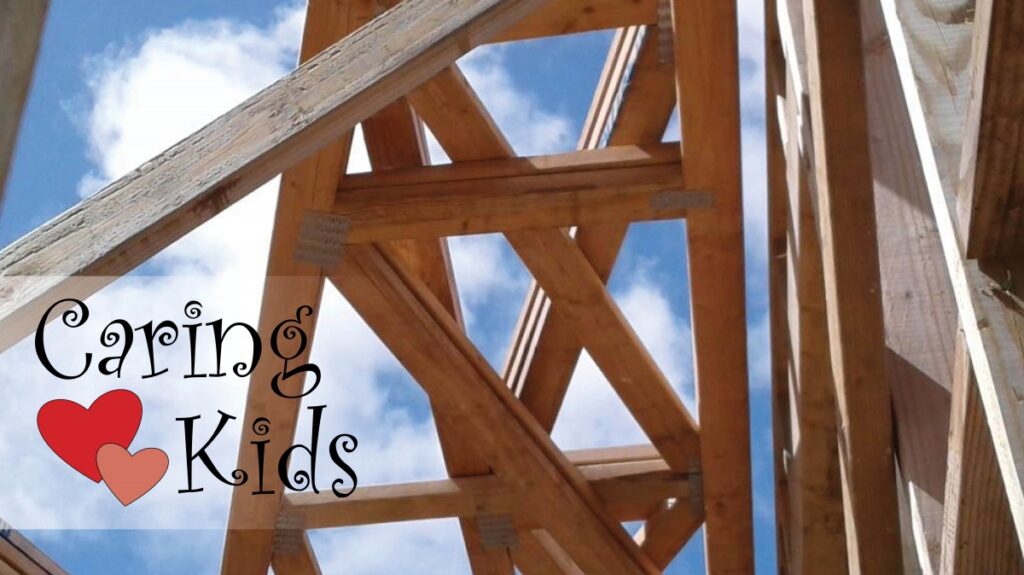Caring Kids: Volunteering with Habitat for Humanity

Caring Kids family volunteer program is partnering with South Puget Sound Habitat for Humanity to provide lunches for their hardworking volunteers!
Date/Time:
February 23, 10:30am – 12:00pm
Location:
Habitat for Humanity Build Site
4405 37th Avenue SE, Lacey, WA
Please let us know you are coming! https://bit.ly/2SUh6mp
Dress Warmly!
This is an outside event (there will be a canopy over the lunch area). Please dress accordingly to the weather. Most likely rain jacket, rain boots, and wear layers.
What to expect:
The Caring Kids family volunteer program will come together to assemble sandwiches for the hardworking South Puget Sound Habitat for Humanity volunteers at their Deyoe Vista Build Site. First we will begin with reading a book together chosen by our Raising A Reader program to introduce our volunteer project. Then we will wash our hands and get ready to assemble sandwiches for the Habitat volunteers (sandwich making materials were donated by Safeway!). The children (with the help of their parents) will serve the volunteers. After all the volunteers have their food, our Caring Kids will also eat the food they had made. Caring Kids families are asked to make a side dish or dessert for the volunteers, something that they make together with their child.
Get your child involved prior to the project:
We are asking Caring Kids families to make a side dish or dessert together to share at the Habitat for Humanity build site. Cooking can help young kids learn and practice some basic math concepts and build language skills. And the experience in creating a meal with you and for someone else can help build their self-confidence and lay the foundation for healthy eating habitat. Try to give them “jobs” that are well suited to their skill level (ages 2-5 are still developing their fine motor skills and cognitive function by following directions). Also try to keep the activity limited to 5-10 minutes. For example:
- House salad: Have your young child tear lettuce into bite sized pieces and/or adding items to the salad bowl that you have chopped.
- Cookies: Have your child add ingredients to the bowl, count the number of eggs you use, and have them make the dough into small balls.
- Pasta salad: Have your child add the ingredients that you have chopped to the bowl and have them mix all the ingredients together.
Plus, check out these great things that happen when you cook together with your child (information from kidshealth.org):
- Building Basic Math: You can help your child hone basic math skills by doing something as simple as counting eggs or pouring water into a measuring cup. You can ask what comes first, second, and third or count together as you spoon dough onto a cookie sheet. When you read a recipe together, you’re introducing new words to your child’s vocabulary and promoting literacy. Following steps in the recipe can work on listening skills.
- Help young kids explore with their senses. Kids learn by exploring with their senses and the kitchen is an ideal place to do that. Invite them to listen to the whir of the mixer, pound dough and watch it rise, smell it baking in the oven, and finally taste the warm bread fresh from the oven. If it smells good, looks appealing, and is easy to eat they may just be willing to try it!
Talk to your kids about affordable housing:
Did you know that Habitat for Humanity has volunteers who come out and help a family build their own home? You will get to see all the houses that volunteers have built alongside family members and are working to build (over 20 homes in this neighborhood!). It takes a lot of money for a family to buy a home and oftentimes families need some support in order to make that happen. That’s where Habitat for Humanity comes in and the hundreds of volunteers that support each family. With the volunteers help, it keeps the costs of the home low and affordable for many families. Families help with what is called sweat equity, working as they can on building their own house. By making lunch for the volunteers at this project, we are also helping a family move into a safe home that they are able to purchase. Talk about the word Habitat and imagine what type of habitat the child might want to build for their family. What do humans need around them to be comfortable and to survive?